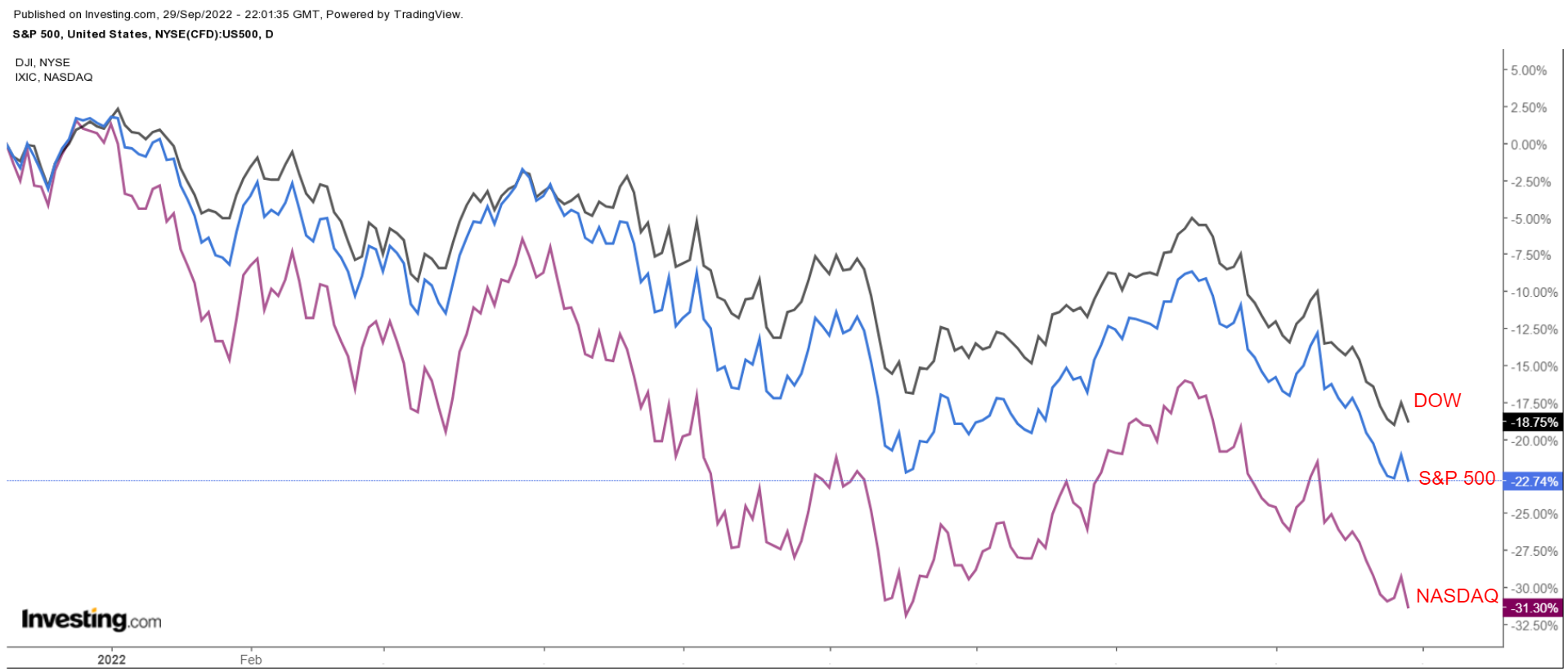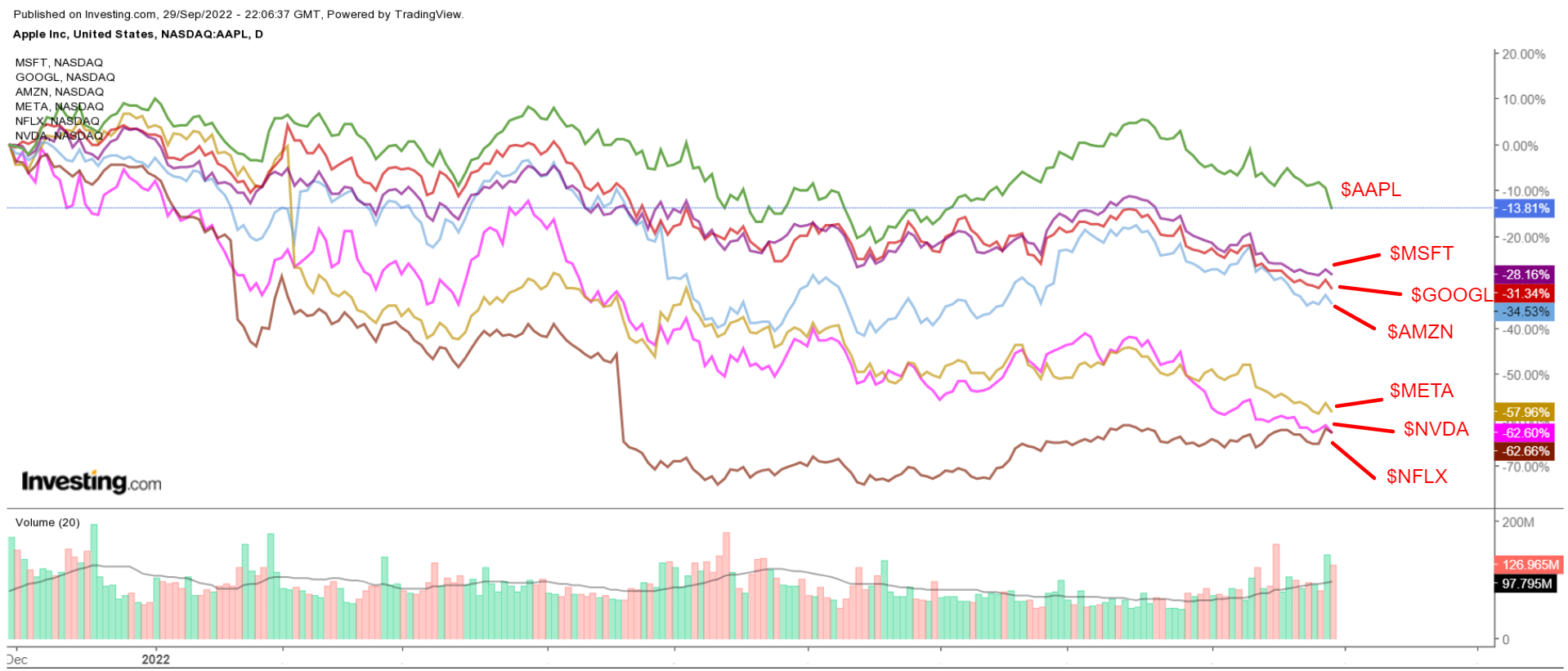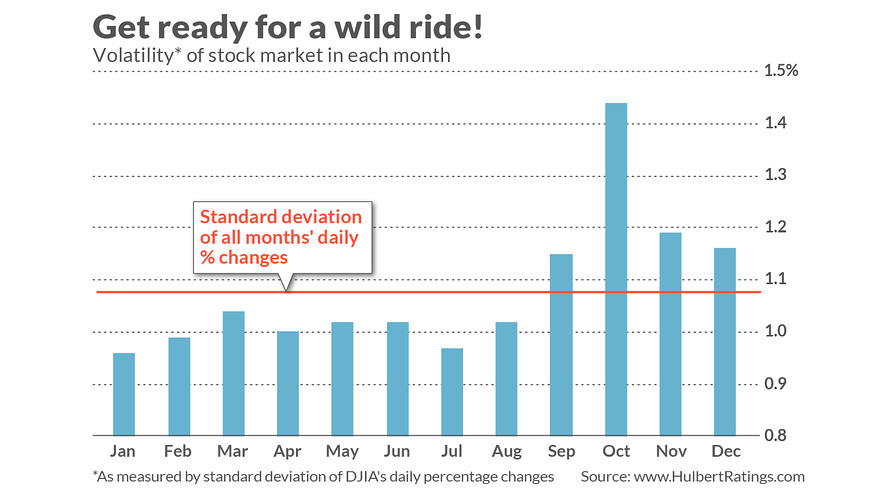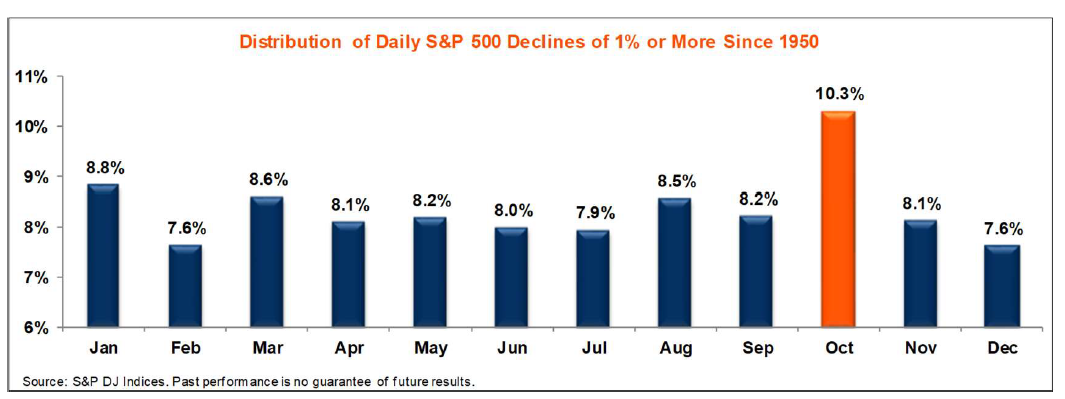- October is historically the U.S. stock market’s most volatile month
- Market focus on nonfarm payrolls report, CPI, Q3 earnings
- Brace for more violent swings in the coming weeks
Stocks on Wall Street tumbled in September, sending the main indexes to fresh 52-week lows amid growing fears the Federal Reserve's aggressive rate hike plans to combat soaring inflation will drag the economy into recession.
Heading into the final trading session of the month, U.S. stocks are on track to record their worst September performance since 2008.
The tech-heavy Nasdaq Composite is down about 9.1% during the month, while the S&P 500 and the Dow Jones are on pace to close 8% and 7.5% lower, respectively.

The S&P is now off to its fourth worst start to a year in history, down 23.6% year-to-date and roughly 25% below its Jan. 3 record close, meeting the technical definition of a bear market.
The Nasdaq, which slumped into a bear market earlier this year, is off 31.4% this year and 33.8% away from its Nov. 19, 2021, record high.
The Dow is down 19.6% year-to-date and approximately 21% off its record high reached at the start of the year and is also in a bear market.
The mega-cap tech heavyweights have been some of the worst performers as investors dial back expectations for future growth and factor in higher interest rates and inflation.
Apple (NASDAQ:AAPL) is off by 15.6% ytd, Microsoft (NASDAQ:MSFT) has tumbled 28.3%, while Alphabet (NASDAQ:GOOGL) and Amazon (NASDAQ:AMZN) have lost 30.9% and 29.2% respectively.
Even more alarming, Facebook-parent Meta Platforms (NASDAQ:META) is down a whopping 57.9%, Netflix (NASDAQ:NFLX) is off 59.3%, and NVIDIA (NASDAQ:NVDA) is down 56.7%.

As a brutal September comes to an end, investors should prepare themselves for further turmoil in October, which historically is a spooky month for stocks.
Several of the greatest crashes in stock market history have occurred during October, including 'Black Tuesday' and ‘Black Thursday’ in 1929, as well as ‘Black Monday’ in 1987 and the worst of the 2008 financial crisis meltdown.

The stock market historically has experienced well-above-average volatility in October. According to research from LPL Financial, there are more 1%-or-larger swings in October in the S&P than in any other month in history, dating back to 1950.
Some have dubbed this market oddity the ‘October Effect’.

Guggenheim Securities Chief Investment Officer Scott Minerd said that he expects stocks to fall another 20% by mid-October, citing a connection between price-to-earnings ratios and inflation.
“We should see stocks fall another 20% by mid-October…if historical seasonals mean anything,” Minerd said in a tweet.
October will bring with it a plethora of market-moving events, the jobs report and CPI as well as Q3 earnings season. Consensus for nonfarm payrolls is an addition of 250,000, slowing from jobs growth of 315,000 in August. Analysts expect CPI to rise 8.1%, cooling from August’s 8.3%.
The Fed has already raised its benchmark interest rate by 300 basis points this year as it fights to bring inflation back under control.

Investors are bracing for what may be the worst reporting season in two years. Big banks kick off the earnings season with JPMorgan Chase (NYSE:JPM) reporting on Friday, Oct. 14, along with Citigroup (NYSE:C).
Q3 S&P 500 earnings are expected to rise by 3.2% when compared to the same period last year, which, if confirmed, would mark the slowest year-over-year increase since Q3 2020.
Between fears over the path of interest rates, mounting recession worries, accelerating inflation, slowing earnings growth, and volatile foreign exchange moves, the Dow, S&P 500, and Nasdaq look set to remain under pressure in October.
Disclosure: At the time of writing, Jesse is short on the S&P 500 and Nasdaq 100 via the ProShares Short S&P 500 ETF and ProShares Short QQQ ETF. The views discussed in this article are solely the opinion of the author and should not be taken as investment advice.